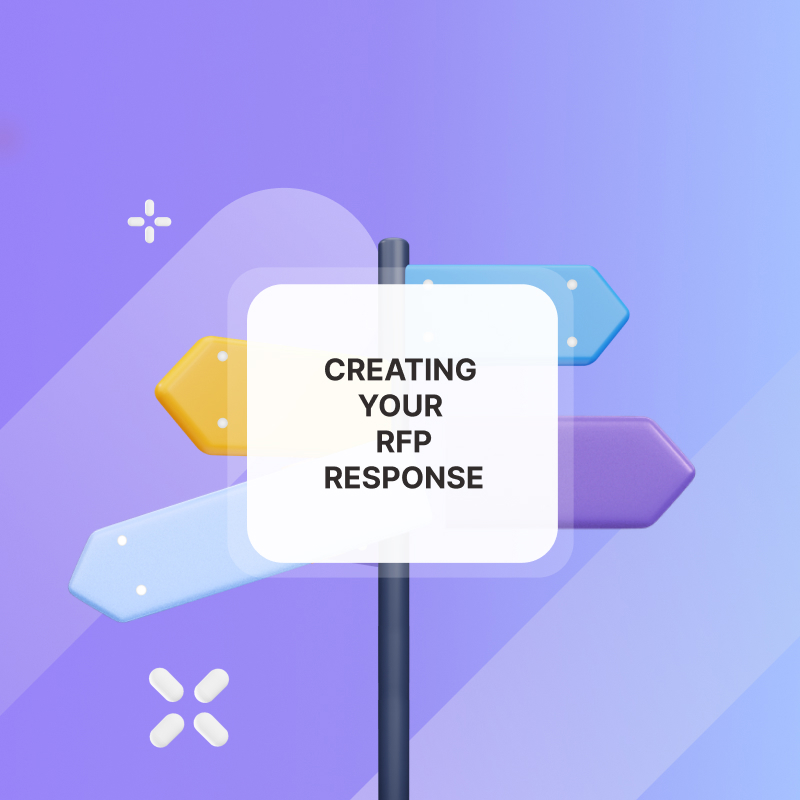
When a pitch deck is crafted and presented well, it sparks the interest of potential investors and acquirers.
But what happens after that initial spark?
Investors need more details to enable them to make informed decisions. This is where a data room comes into play.
Data rooms contain details that move investors from just being interested to closing a successful deal.
This blog will explore the concept of a data room, explain why it's crucial for attracting investors and acquirers, and how you can leverage AI to build an effective digital data room.
What Is A Data Room
A data room is a secure virtual space that allows businesses to share confidential or sensitive documents with authorized viewers.
They are like secure and collaborative workspaces with advanced security features.
Therefore they are usually used for sharing sensitive information with potential investors, acquirers or other relevant parties.
What is the Difference Between a Data room and a Pitch deck?
Purpose
Pitch Deck: It provides a concise and visually compelling presentation aimed to grab attention and generate initial interest from investors or acquirers. It highlights the core value proposition, market opportunity, competitive advantage of your business and a summary of other important information.
Data Room: It is a secure collaborative space that provides detailed information for deeper analysis of your company by investors or acquirers during the due diligence process. It usually contains full details and a breakdown of everything you added to the pitch deck.
Content:
Pitch Decks: They usually contain summaries and key takeaways, often delivered in a visual format with charts, graphs, and compelling storytelling.
Data Room: Contains more detailed documents to support the information presented in the pitch deck. This could include:
- Financial statements (balance sheets, income statements, cash flow statements)
- Business model
- Business plans and forecasts
- Market research reports
- Customer data and contracts
- Legal documents (incorporation documents, intellectual property filings)
- Management team resumes and bios
- Pitch deck for reference
Accessibility
Pitch Deck: This can be posted online, shared and presented during pitches or meetings.
Data Room: Only accessible to authorized users with access controls or permission levels, to ensure that sensitive information is secure.
Timing:
Pitch Deck: Often used at the beginning of fundraising or acquisition discussions.
Data Room: Typically accessed by investors or acquirers after initial interest is expressed and they move into due diligence.
Tracking
Pitch Deck: They are static documents that can’t be tracked until they are uploaded to your data room.
Data Rooms: AI-driven data rooms like Hubforce enable you to see real-time engagement data of each investor on your documents. For example, if an investor is spending a longer time on your business model page, it could indicate interest in the business model. With this data, you can make targeted follow-up decisions.
Why are Data Rooms Important for Investors Pitching and M&A?
Data rooms streamline processes, enhance transparency, and empower informed decisions, increasing the chances of a successful deal.
For Investor Pitching:
- Simplified Due Diligence: Data rooms eliminate the back and forth of traditional due diligence, where a lot of documents are exchanged via endless email threads. Data rooms make it easy for investors to locate specific information when they need it. Documents are organised and readily available in a secure space, saving investors significant time and resources. Hubforce makes this even easier with the investor pitching template. Hubforce AI takes your content and automatically structures it in a user-friendly format that guides investors to the right content at any time.
- Informed Decisions: Data rooms enable investors to conduct in-depth research into your important business documents easily. They can easily assess your company’s potential and evaluate the risks involved with investing in you. Without a structured data room, due diligence will be time-consuming because they would have to sort through many emails to get specific documents. Data rooms also ensure that potential investors are looking at updated content at any time.If you rely solely on emails, whenever you update a document, you would have to send it through email. The updated document can get lost in the investor’s inbox. This creates the risk of making decisions from outdated documents.
- Transparency & Trust: A secured and well-organised data room promotes trust and transparency. Investors can easily find the information they need, demonstrating your company's professionalism and organisation.
For M&A (Mergers & Acquisitions):
- Fast and Efficient Deal Process: Data rooms provide acquirers with immediate access to vital information about the target company. This accelerates the acquisition process.
- Confidentiality & Security: Data rooms ensure that sensitive information is protected and accessible only to authorised people. This reduces the risk of confidential data leakage during negotiations.
What do Investors and Acquirers Look for in a Data Room?
A logically structured data room creates a positive first impression.
- Comprehensiveness: Ensure the data room is well structured with all the essential documents for due diligence positioned in the right places. This saves investors and acquirers time when searching for specific information.
- Financial Strength: Financial statements, budgets, forecasts, and tax returns should be strategically positioned and up-to-date. Investors and acquirers want to see a clear picture of your financial health, growth strategy and financial roadmap.
- Market Validation: Market research reports, customer data and competitive analysis help investors understand your target market, positioning, and competitive advantage. This demonstrates that you have a deep understanding of your industry and how to grow in it.
- Legal Documentation: Ensure that contracts, trademarks, incorporation documents, intellectual property filings, and other legal documents are available.
- User-Friendly Interface: Your data room should be easy to navigate. Your competitors also want your investor’s attention. If your data room is difficult to navigate, it could discourage and push them toward competitors. Therefore, investors and acquirers with little or no technical background should be able to find what they need quickly in your data room.
- Secure Access Controls: Your data room should have security features like permission levels and document encryption. This ensures that only authorized users can access specific documents, protecting sensitive information.
- Regular Updates: Keep the data room updated with the latest financial statements, market research, and other relevant information to demonstrate transparency and continued progress.
How To Build An Effective Data Room
1. Planning and Preparation:
- Define Your Goals: Understanding whether you want funding or acquisition will help you determine the specific documents needed.
- Assemble Your Team: Identify individuals responsible for data collection, and ongoing maintenance of the data room.
2. Choosing a Data Room Provider:
Security Features: Prioritise data rooms that are highly secure and permit access controls to ensure data confidentiality.
- Usability and Interface: Choose a user-friendly platform with easy navigation and search functionalities for a smooth investor/acquirer experience. To avoid overwhelming your investors or acquirers with information, you can keep some content locked and reveal them gradually as the process progresses.
- Cost and Scalability: Consider your budget and potential future needs when evaluating pricing models and data storage capacity.
- Real-time Analytics: Prioritise data rooms that allow you to track the real-time engagement of investors/acquirers with your documents. Track what contents they are looking at and follow up accordingly. If you are speaking with multiple investors or acquirers, you can determine which one is more likely to close a deal with you from their engagement with your documents. You can also discover what interests different investors and build on that as your strength.
3. Structure and Organization:
- Logical Content Structure: Use pitching and M&A templates to create a clear and easy-to-understand content structure.
- Descriptive Naming: Use consistent and descriptive names for easy identification of documents.
4. Content Selection and Upload:
- Essential Documents: Include key financial statements, budgets, forecasts, market research reports, customer data, legal documents, and team.
- Tailored Content: After adding fundamental documents, consider adding specific information relevant to your investor/acquirer interests. Update this information according to their activity in the data room. Hubforce enables you to get full visibility on investor/acquirer activity and tailor content according to their priorities.
- Protect confidential content: For example, you may not want to disclose certain customers during the process of securing an investment or acquisition.
5. Security and Access Controls:
- Set Permission Levels: Assign different access levels based on user roles and restrict access to sensitive documents as needed.
6. Presentation and Refinement:
- Consistent Branding: Ensure a professional presentation within the data room and maintain consistent branding.
- Introductory video: Include an introductory video within the data room. You can also briefly walk investors/acquirers through the platform and documents
Leveraging Hubforce AI-driven Data Room for Investors and M&A
Hubforce enables companies to build and structure M&A or pitching data rooms in 30 seconds with Hubforce AI.
Pitching to investors
Hubforce analytics enables you to track real-time investor engagement within the digital data room.
You can use this data to gauge the interest level of potential investors to determine where to direct your focus.
Merger and Acquisition (M&A)
Hubforce enables your company to create interactive digital data rooms and centralise all the relevant information that would be required for a potential merger or acquisition.
It provides valuable data showing engagement and interest levels from each potential acquirer.
Data derived from Hubforce Analytics can then be used to determine which potential acquirers you should continue engaging with.
You can see what content is being viewed and how it is shared internally.
Hubforce facilitates data-driven follow-ups and conversations with potential investors/acquirers. It speeds up the acquisition or investment process by making your value proposition clearer.


















